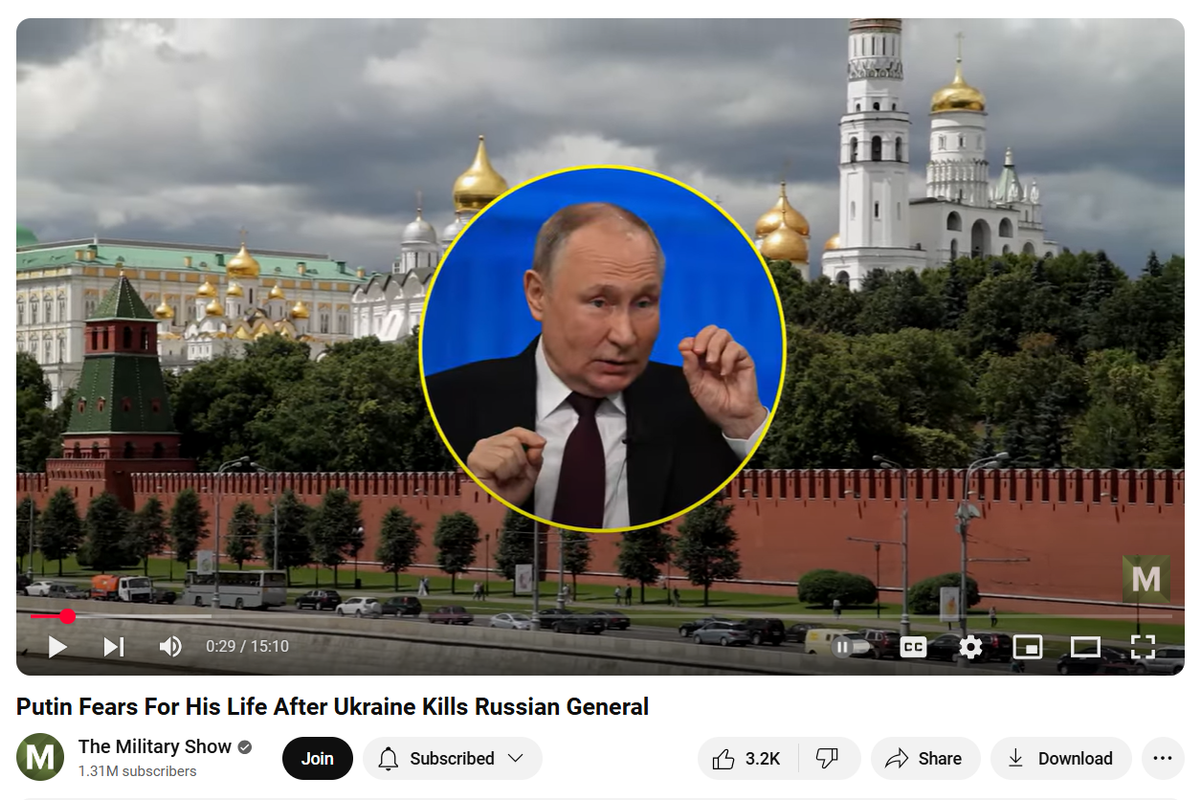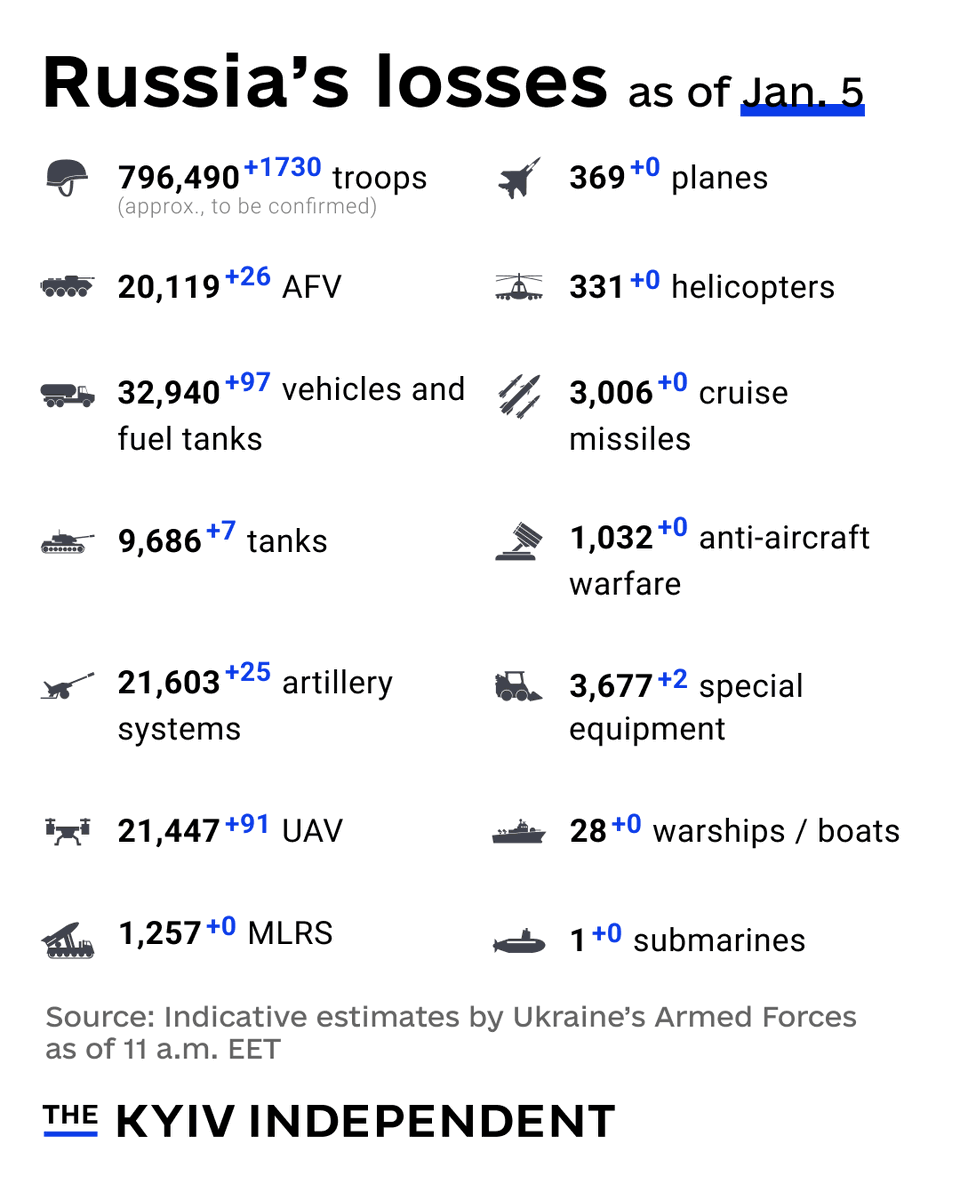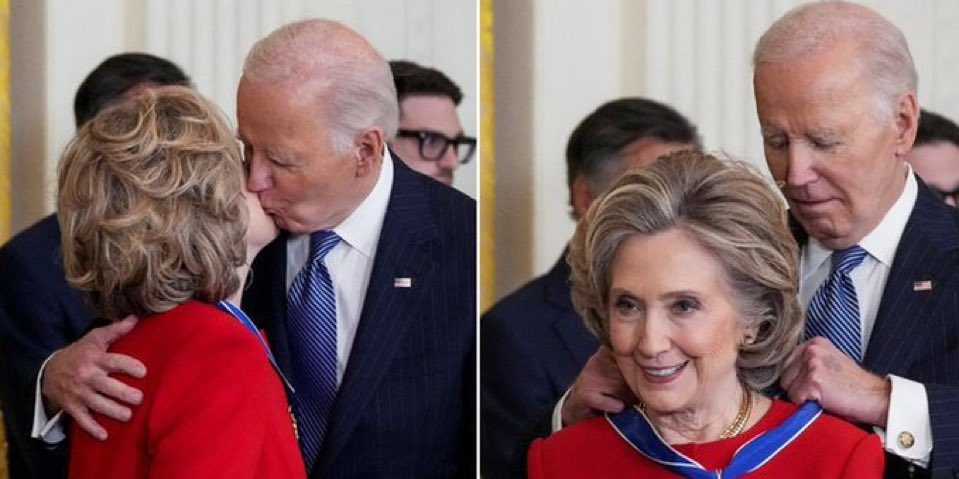Skip to comments.
Attack On Europe: Documenting Russian Equipment Losses During The 2022 Russian Invasion Of Ukraine (2 year anniversary)
ORYX ^
| Since February 24, 2022 and daily
| ORYX
Posted on 02/24/2024 5:59:01 AM PST by SpeedyInTexas
click here to read article
Navigation: use the links below to view more comments.
first previous 1-20 ... 10,301-10,320, 10,321-10,340, 10,341-10,360 ... 22,121-22,128 next last
To: blitz128
“There is a guy on YouTube that has a series called china fakes everything”
Here are many of his china fakes everything videos. I will check them out today..... One entertaining one was Chinese selling fake donkey meat. Instead, they are selling pig meat in huge chunks, that has had donkey meat flavoring added to it....lolsszzzzzzz
https://www.youtube.com/@ChinaInsiderWithDavidZhang/search?query=fakes
To: blitz128
Serpentenza has been all over YouTube. Showing how China street food vendors are recycling the most disgusting old cooking oil. To cook with it again. ircc the knick name is “gutter oil”
gutter oil video >>>
https://www.youtube.com/watch?v=Gu6yJyi97ZI&t=2s
To: dennisw
Your Biden is about to give The Soros a Major Medal to honor his unwavering support of The Zelensky
Well done, Dimwit!

To: AdmSmith
Kremlin snuff box, 01/03/24
https://t.me/s/kremlin_secrets
Two words about the fate of Transnistria
On January 1, 2025, supplies of Russian gas to Europe through the territory of Ukraine ceased. This put an end to the long history of gas relations with Ukraine. Moldova and Transnistria (but not only them) came under attack (quite expectedly).
Many people ask us - what is happening in this region? We answer.
Firstly, Transnistria was left without Russian gas, and Moldova was left without electricity, which was produced at the Moldavian State District Power Plant.
Secondly, we currently do not have actual access to Transnistria, which forces the local authorities to engage in dialogue with Chisinau. Maia Sandu understands that it will be difficult for her to win the parliamentary elections, but at the same time she is essentially forced to integrate Transnistria into Moldova. A complex process that is disadvantageous for everyone at the moment.
At the same time, Kyiv’s refusal to supply Russian gas to Europe economically pushes Tiraspol into the arms of Chisinau. If you remember, we have repeatedly written about Zelensky’s attempts to achieve Chisinau’s consent to a more aggressive option for eliminating the independence of Transnistria [ https://t.me/kremlin_secrets/386 ].
Thirdly, we see individual statements about the need to use force in the region. What can I say - the idea in the current situation is risky. Without physical access to the territory of the PMR, we, of course, can send troops to the Odessa region, but our interlocutors in the Ministry of Defense consider the likelihood of success there to be extremely low. In particular, due to the complex logistics along the Black Sea, even in the medium term.
Fourthly , our interlocutors in political circles are hatching another plan - to place their bets on the elections. In particular, actively using pro-Russian sentiments in Gagauzia and other regions of Moldova. But we still have to wait until the Moldovan elections in July. In particular, residents of the PMR who are now left without any public services.
There will be difficult and historic decisions in the near future that will change the economic balance in the region.
10,324
posted on
01/04/2025 7:41:46 AM PST
by
PIF
(They came for me and mine ... now its your turn)
To: PIF
Kremlin snuff box, 01/04/24
https://t.me/s/kremlin_secrets
Instructors from China arrived in Russia. They will be trained in drone control tactics
Throughout the Northeast Military District, the Chinese Army has shown interest in the practical use of technology in modern combat operations. It is no secret that the whole world is one way or another watching how the approach to warfare and the use of technological means directly on the battlefield is changing.
The Chinese study not only at home . We learned that on January 1, 20 instructors from China arrived in Moscow. All of them are military personnel and will be prepared to transfer their knowledge to their colleagues as much as possible after returning to their homeland.
The training process will continue for 30 days, and translators will be hired for this purpose. No one is saying yet whether the Chinese will be taken to the Northern Military District zone, but for effective work it would not hurt for them to visit the headquarters and observe the process of destroying the enemy. Moreover, technologically the Chinese have a resource, but theory is one thing, but in practice everything is completely different.
—
Propagandist’s Notebook
https://t.me/designersmil/9709
It is not only the West that is learning from the war in Ukraine. PRC Army releases propaganda video of UAV training based on experience gained from watching our war
Video at link [ https://t.me/designersmil/9709 ] with PLA troops learning to fly drones from stationary launch to mobile launch, hitting targets with dropped explosives
What US Army doink?
10,325
posted on
01/04/2025 7:47:16 AM PST
by
PIF
(They came for me and mine ... now its your turn)
To: PIF
Propagandist’s Notebook, 01/03/24
https://t.me/s/designersmil
Enemies want Russia’s defeat
The fight against our Motherland began with Euromaidan, and then intensified when we decided to protect Russians in Crimea and other territories of Ukraine.
Before this, they fought against us slowly, undermining the unity of society, preparing the opposition, enslaving our media and culture. After 2014, attacks on Russia became more aggressive, and various forms of terrorism began to be indulged, including from Ukraine, which was previously difficult to imagine
The enemies want our defeat, some radical with the destruction of a large number of Russians, some political with a change of power and the disintegration of the country into small, dependent countries fighting each other, some economic, depriving Russia of its natural and human wealth, and someone informational, when people passively surrender, having stopped defending their interests and with the slogan “this is not our war,” they themselves will allow themselves to be killed
The number of such enemies is significant, they are active and few can call to stop this war. They are afraid that a free Russia will prevent them from ruling their world
There is no one to stand up for our country except us! If you want to save Russia and its multinational people, fight for Victory!
10,326
posted on
01/04/2025 7:50:51 AM PST
by
PIF
(They came for me and mine ... now its your turn)
To: PIF; All
FTA:
Ukraine’s Su-25s Seen Launching Hammer Rocket-Boosted Bombs For The First Time A video compilation provides a unique look at the French-made Hammer munition being used by Ukrainian Su-25 Frogfoot ground-attack jets."Hammer" Rocket-Boosted Bombs give the Su-25 true stand-off capability.
"Hammer" guidance is GPS aided INS.
Target coordinates (most likely) are input on the ground and cannot be changed while airborne.
Mission planning would be to the "launch" point.
Thanks for the ping.
To: FtrPilot
10,328
posted on
01/04/2025 10:25:53 AM PST
by
PIF
(They came for me and mine ... now its your turn)
To: JonPreston
By the way, that is a bloated Hillary photo from 2021. Do you have Vlad's approval to be appropriating photos from twitter? Then pretending they are your own?

To: dennisw
This comment of yours isn't clever or funny.
Sometimes it best to keep your Dimwit moof shut.
To: dennisw
“ To repair such cables (internet?) must take a few weeks and a few million dollars.”
I think that would be the norm, but that area is likely to have cable laying/repair ships close by - within a days sailing time.
To: FtrPilot
Reporting From Ukraine:
https://www.youtube.com/@RFU/videos
Reporting From Ukraine Uncensored Combat Footage (from this and past Reports) is found on Telegram:
https://t.me/RFUEnglish or @RFUEnglish
[ You need to have the Telegram app to view the larger videos. ]
The complete transcript.
—
[ Fastest 1-Way Trip. Desperate Russian Mad Max Attack Ends in Disaster ]
Today [ Jan 04, 8 pm ], there are a lot of interesting updates from the Toretsk direction.
Here, as Russians again attempted to shift away from the vicious urban combat within the city, Russians launched another large mechanized offensive meant to encircle the southern flank of Toretsk.
However, in doing so, Russians quickly found themselves in a trap, advancing through a narrow corridor with Ukrainian tanks raining devastating fire on them from above.
After weeks of relentless assaults on Toretsk, the Russians remain determined to encircle the city from the south. They shifted their focus to this area, as the battle within the city was depleting their manpower and resources, with Russians losing at least a full mechanized battalion’s worth of infantry in the urban fighting each week.
Previously, Russians suffered a crushing defeat in their northern flanking attempt, where their assault groups were decimated by sniper fire, effectively ruling out this direction as a viable axis of advance.
The city’s southern flank offers the best conditions for a Russian flanking maneuver. Unlike the high-rise urban environment of Toretsk, this area consists of the small towns of Shcherbynivka, Leonidivka, and Petrivka, made up of one-story houses.
The Russian tactics here focus on breaching Ukrainian defenses with large mechanized assaults to deploy infantry assault groups behind Ukrainian lines, which scatter and take positions in the many basements. By advancing northward along the towns’ elongated layout, Russians could reach Toretsk’s rear and cut off crucial Ukrainian supply routes to the city.
The primary tactical advantage for Russian forces in Shcherbynivka lies in the concealment offered by its residential area. The over 1,000 houses in the towns allow Russian troops to spread out, using the buildings and basements to avoid bunching up.
This minimizes the Russian exposure to Ukrainian counterattacks and artillery strikes once entrenched, reducing potential losses.
However, If we look at the topographic map, we can see that Shcherbynivka is located in the lowlands together with the entire Russian attack vector, with Ukrainian positions overlooking the settlements on top of the hills. This forces Russian assaults to restrict their advance only along a narrow corridor in the lowlands, where the Ukrainian fighters can effectively observe the movement of Russian forces towards the town.
Stretched logistics across the narrow corridor in the lowlands, gives Ukrainians ample time to detect and destroy Russian mechanized assaults, by enforcing fire control from the higher elevations, immobilizing the Russian assault units. The narrowness of the Russian assault vector also made it easier for Ukrainians to conduct counter-raids, as all the Russian positions were in easy view of Ukrainian tanks, with no threat of a Russian flanking maneuver.
Combat footage from the area shows the destruction of a Russian mechanized assault group, including BMP-2s, by FPV drone strikes as they become exposed in the narrow open fields.
As a result, only a small group of Russian soldiers dismounting from damaged vehicles manage to reach the houses of Shcherbynivka; as the footage shows how Ukrainian drones were relentlessly pursuing them.
Ukrainian drone operators also tracked every building Russians attempted to hide in, allowing them to relay precise coordinates to Ukrainian tank crews, ending in the destruction of the entire Russian assault group and neutralizing their holdouts.
Thanks to drone surveillance providing accurate coordinates, the tank crews can fire indirectly without exposing themselves to Russian fire, adopting a mobile artillery role to eliminate the enemy with utmost precision.
Overall, the Russians launched yet another assault on the southern flank of Toretsk in an attempt to encircle the city from the south. However, the concentration of their assault units in a narrow corridor within the lowlands resulted in the complete failure of their offensive. Ukrainians used the high ground to quickly detect the Russian assault groups, directing devastating tank fire from a safe distance.
Continued failure to advance on the flanks will force Russians to continue their advance through the difficult urban terrain of Toretsk city, leading to an increased amount of casualties. As reports from Ukrainian soldiers active in the area suggest, Russians are losing over a 100 men a day during the brutal assaults.
10,333
posted on
01/04/2025 1:39:13 PM PST
by
PIF
(They came for me and mine ... now its your turn)
To: BeauBo; dennisw; PIF; poof; pip; neocon; Speedo
I present to you your Commander-in-Chief

To: gleeaikin
Russian Offensive Campaign Assessment, January 4, 2025
Ukrainian forces reportedly destroyed or damaged over 3,000 Russian tanks and almost 9,000 armored vehicles in 2024 as Russia continues to accrue vehicle losses that are likely unsustainable in the medium-term. Data from the Ukrainian General Staff indicates that Ukrainian forces destroyed or damaged 3,689 tanks, 8,956 infantry fighting vehicles (IFVs), 13,050 artillery systems, and 407 air defense systems between January 1, 2024 and January 1, 2025.[1] Russian forces reportedly lost at least 197 tanks, 661 armored personnel carriers (APCs), and 65 artillery systems larger than 100mm throughout the frontline during a period of intensified offensive operations in Donetsk Oblast in September and October 2024 and likely sustained a higher rate of tank and armored vehicle losses in June and July 2024 when Russian forces were conducting mechanized assaults in western Donetsk Oblast several times a week that often resulted in armored vehicle losses.[2]
Russia's current armored vehicle and tank production rates indicate that such losses will likely be prohibitive over the longer term, particularly as Russia continues to dip into its Soviet-era stocks.[3] Ukrainian military observer Kostyantyn Mashovets stated in February 2024 that the Russian defense industrial base (DIB) can produce 250-300 “new and thoroughly modernized” tanks per year and can repair roughly 250-300 additional damaged tanks per year, far below Ukraine's estimate of 3,600 Russian tanks lost in 2024.[4] The British International Institute for Strategic Studies (IISS) think tank also reported in February 2024 that Russia is likely able to sustain its rate of vehicle losses at that time (over 3,000 armored fighting vehicles including tanks, armored personnel carriers, and infantry fighting vehicles annually as of 2023 and nearly 8,800 between February 2022 and February 2024) for at least two to three years (until about February 2026 or 2027) by mainly refurbishing vehicles from Soviet-era storage facilities.[5] A social media source tracking Russian military depots via satellite imagery shared an updated assessment of Russian tank and armored vehicle storage facilities on December 22 and assessed that Russian forces have 47 percent of their pre-war tank reserves, 52 percent of pre-war infantry fighting vehicle reserves, and 45 percent of pre-war armored personnel carrier reserves remaining in storage as of a recent unspecified date.[6] The social media source noted that Russian forces have used most of their newer T-90 and T-80 tanks but still have a majority of their older tanks in storage, although some of these tanks have likely been heavily degraded by weather and time. It appears increasingly unlikely that the Russian military can sustain its current annual rate of almost 9,000 armored vehicle losses through 2025. This loss rate is nearly three times the annual loss rate of the first two years of the war according to IISS, suggesting that the February 2024 IISS estimate that Russia can sustain its vehicle losses through 2025 and possibly 2026 is no longer valid.
Russian forces have reportedly been using fewer armored vehicles in assaults in the most active areas of the frontline in recent weeks, possibly in order to conserve these vehicles as Soviet stocks dwindle. Ukrainian military sources have recently noted that Russian forces have been using fewer armored vehicles and conducting fewer mechanized assaults in the Kurakhove direction after suffering significant vehicle losses in October and November 2024.[7] The spokesperson of a Ukrainian brigade operating in the Kurakhove direction stated on January 3 that Russian forces have switched to mainly using infantry to conduct assaults in the area over the past few weeks and are only using armored vehicles as fire support for infantry assaults.[8] The New York Times reported on December 31 that a Ukrainian lieutenant colonel stated that Russian forces are increasingly using electric scooters, motorcycles, and all-terrain vehicles (ATVs) during assaults in eastern Ukraine, possibly as part of ongoing Russian efforts to offset armored vehicle losses.[9] Russian attacks near more mid-sized, urban settlements such as Kurakhove and Pokrovsk may also be less conducive to mechanized assaults than the small settlements and open fields where Russian forces advanced in most of 2024. Russian forces may be using fewer armored vehicles in the Kurakhove and Pokrovsk directions if the Russian military is struggling to reequip frontline Russian units and formations and if Russian military command does not want to withdraw Russian units for rest and reconstitution and risk further slowing Russian advances in high-priority frontline sectors.[10]
https://www.understandingwar.org/backgrounder/russian-offensive-campaign-assessment-january-4-2025
10,335
posted on
01/04/2025 11:32:14 PM PST
by
AdmSmith
(GCTGATATGTCTATGATTACTCAT)
1,730 i.e. more than 1.20 Russians and Norks/min. It will be more than 800,000 in the coming week.

10,336
posted on
01/04/2025 11:37:42 PM PST
by
AdmSmith
(GCTGATATGTCTATGATTACTCAT)
To: PIF; FtrPilot
Кремлевская табакерка
Consequences of the offensive. Russian Armed Forces losses at the front increased significantly in December
The results of the offensive actions of the Russian Armed Forces in the fourth quarter of 2024 were truly impressive. We managed to make significant progress in the Pokrovsky, Kupyansky and other directions. There are also individual successes in the Kursk region. Sources attribute this not only to the enemy's problems, but also to a change in the tactics of our troops. Instead of small infantry groups, columns with armored vehicles began to be used more often during assaults. On the one hand, this accelerated the advancement at the front. On the other hand, losses in equipment increased in some places by 2-3 times.
Interlocutors in the General Staff say that the tactics were partly forced - because of the elections in the United States, they began to talk more often about negotiations, and this, in turn, forces us to strengthen our positions (we have previously written repeatedly about the unlikelihood of the end of the SVO). The Ministry of Defense says that losses in infantry fighting vehicles and armored personnel carriers exceeded the capacity for replenishment and restoration by at least twice. “We won't be able to advance for long with such losses in equipment. Equipment is one thing, and the second is that we are losing experienced crews. Although in some places this allows us to advance quickly,” says our interlocutor.
It should be noted that we have spoken about the problem with armored vehicles more than once. In this regard, sources especially emphasize that the participation of DPRK troops in the battles in the Kursk region has simplified the task. “They are going on the assault basically without any equipment at all,” said our interlocutor.
https://t.me/kremlin_secrets/5126
10,337
posted on
01/04/2025 11:45:52 PM PST
by
AdmSmith
(GCTGATATGTCTATGATTACTCAT)
Many Russian companies, especially those in the small and medium business sector, risk facing bankruptcy due to ill-considered salary increases, business expert Vladimir Mozhenkov , founder of Mozhenkov Progress Consulting, told Gazeta.Ru.
According to him, this trend is due to the violation of an important economic principle, according to which the growth of labor productivity should outpace the growth of the wage fund. “Today, many companies, trying to retain employees, automatically increase salaries without providing them with real work results. This is a strategic mistake that destroys the economic stability of the enterprise. As a result, costs grow, and profitability falls. For many, this is the path to bankruptcy,” the expert warns.
https://www.gazeta.ru/social/news/2025/01/03/24764522.shtml
10,338
posted on
01/04/2025 11:52:54 PM PST
by
AdmSmith
(GCTGATATGTCTATGATTACTCAT)
The Clever Way to Count Tanks - Numberphile
How mathematics and probability cracked the puzzle of how many tanks were being produced by Nazi Germany during World War 2.
https://www.youtube.com/watch?v=WLCwMRJBhuI
16 min video
10,339
posted on
01/05/2025 3:07:06 AM PST
by
AdmSmith
(GCTGATATGTCTATGATTACTCAT)
Between them both they have approximately 1.7 million kills.

Navigation: use the links below to view more comments.
first previous 1-20 ... 10,301-10,320, 10,321-10,340, 10,341-10,360 ... 22,121-22,128 next last
Disclaimer:
Opinions posted on Free Republic are those of the individual
posters and do not necessarily represent the opinion of Free Republic or its
management. All materials posted herein are protected by copyright law and the
exemption for fair use of copyrighted works.
FreeRepublic.com is powered by software copyright 2000-2008 John Robinson





